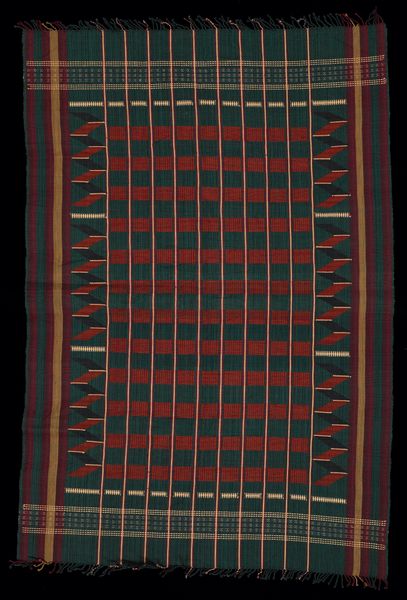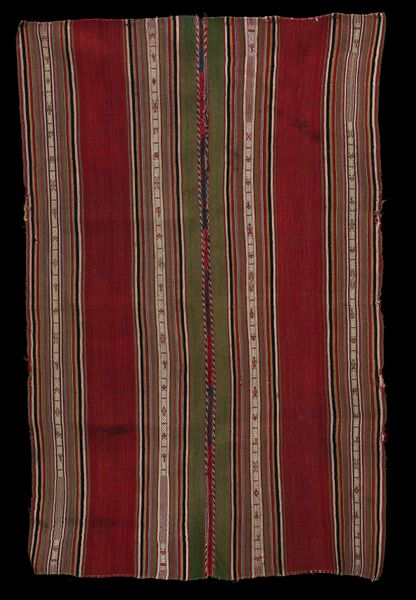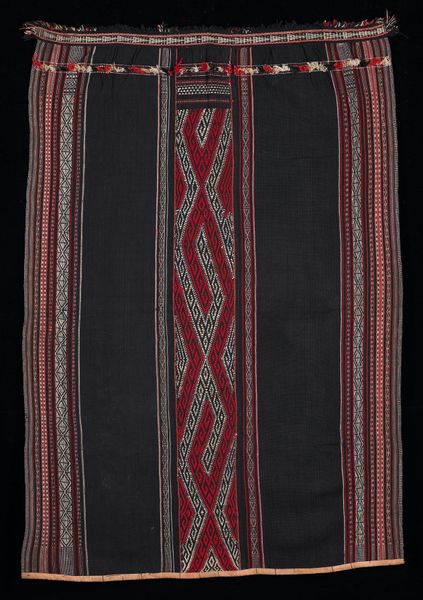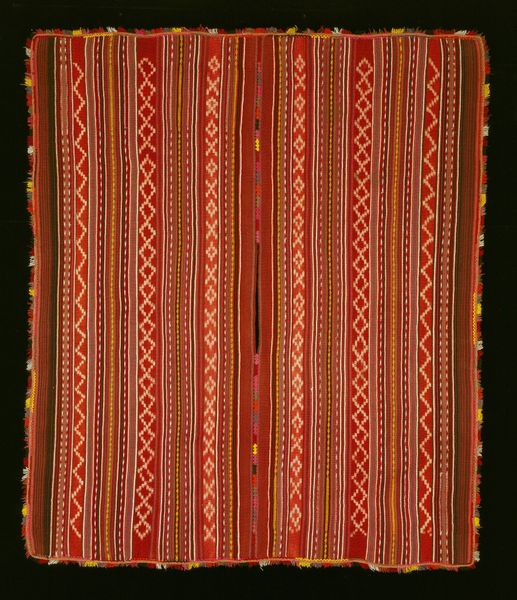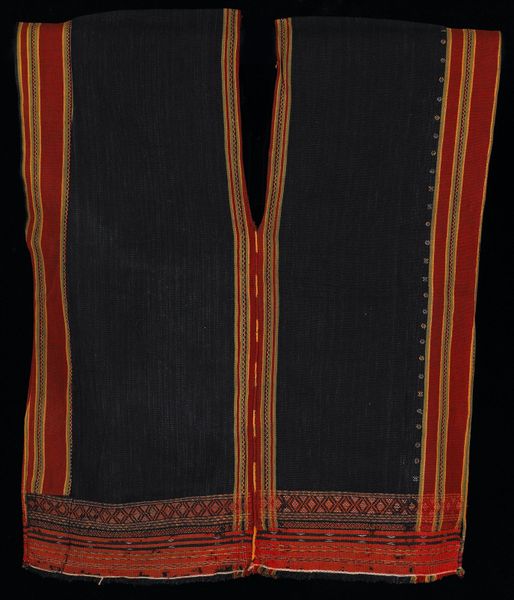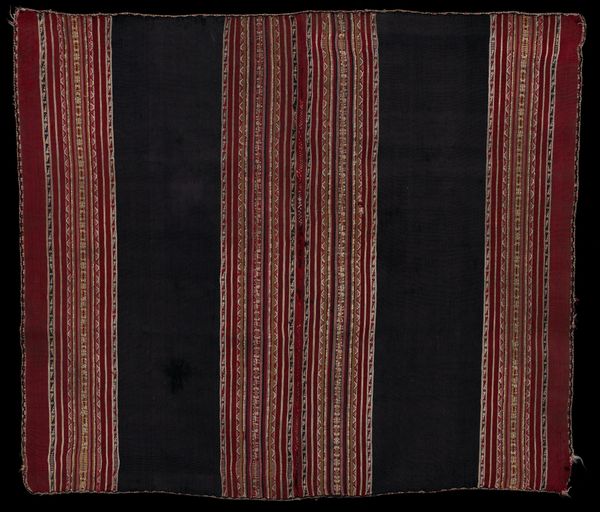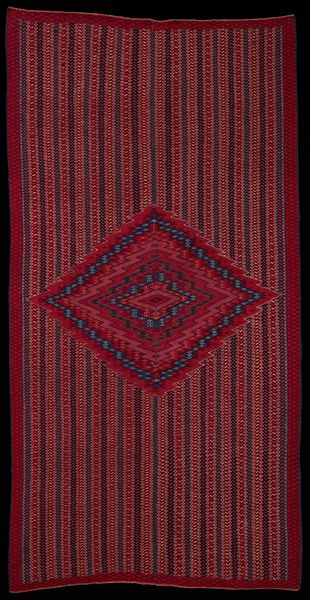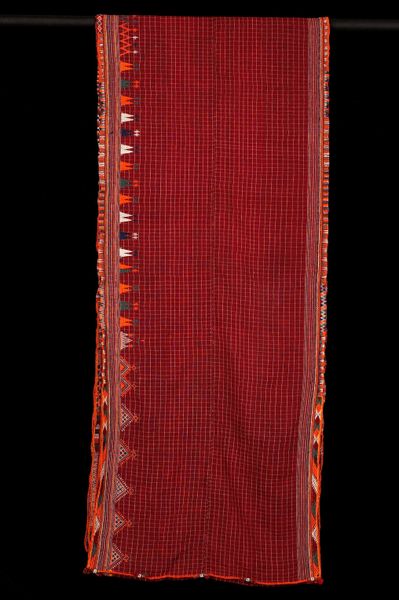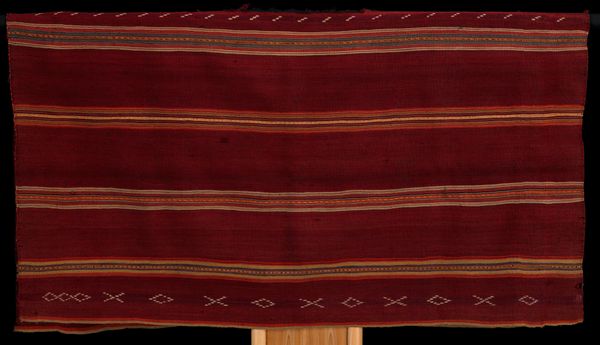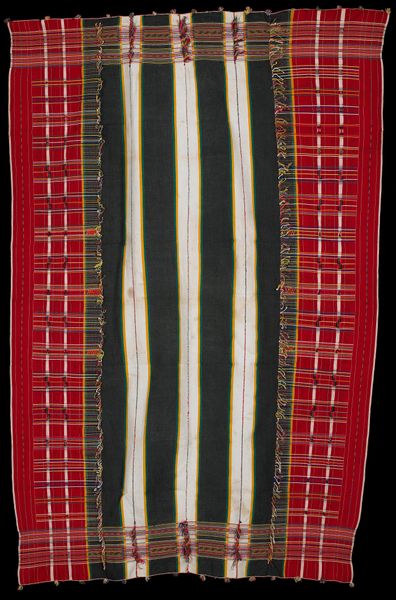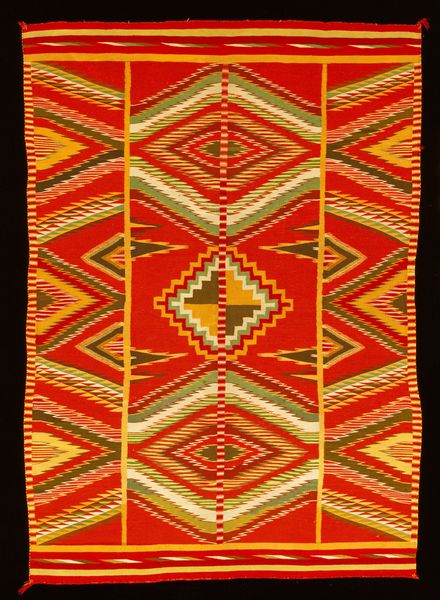
fibre-art, weaving, textile, cotton
#
fibre-art
#
weaving
#
textile
#
geometric pattern
#
geometric
#
repetition of pattern
#
pattern repetition
#
cotton
Dimensions: 202 7/8 x 17 in. (515.3 x 43.18 cm) (including beads and fringe)
Copyright: Public Domain
Curator: This striking textile, known as "Loin cloth," dates from the mid-20th century. Its creation, like much textile art, reflects a convergence of practical necessity and artistic expression. Editor: It immediately strikes me as something both incredibly functional and ceremonial. The color palette, the strong, rhythmic stripes… there’s a beautiful dignity to it. Curator: Exactly. We know it’s crafted from woven cotton fibers, so it’s the end product of farming, spinning, and, crucially, weaving— labor, quite a bit of skilled hand labor and probably within a communal setting, went into its making. How does that materiality inform its reception, I wonder? Editor: Knowing its construction gives it a deeper historical weight, certainly. This piece, its pattern of broad and narrow stripes intersected at the bottom, speaks volumes about cultural identity and perhaps social status. How would something like this be viewed or used, who gets access? I think these questions immediately push us into its broader place in society at the time. Curator: Agreed. Looking closer, the repetition of the pattern also hints at a deliberate design, almost architectural in its construction. What looks initially simple contains complexities relating to tradition, craft and functionality all woven together, wouldn't you say? Editor: Absolutely. When displayed in a museum, its cultural importance shifts again – from daily object to treasured artifact. It raises questions about our contemporary interpretation of non-Western art and the responsibilities that arise when we display textiles like this one outside their original cultural settings. Curator: And I see its influence trickling through today's design trends. Considering its durable natural fibers, perhaps there is a sustainability aspect there as well, compared to the harmful fast-fashion trends of modern textiles production. Editor: Precisely. It provides not just aesthetic inspiration, but potentially prompts necessary re-evaluation of our modes of textile production, use and display.
Comments
No comments
Be the first to comment and join the conversation on the ultimate creative platform.
